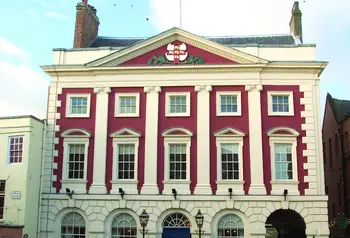Civic, church and chocolate heritage: York has it all!

The impressive Georgian building, that was the first purpose-built mayoral residence in the country, can now embark on its Opening Doors project that will reveal to the fascinated visitors hitherto hidden architectural flourishes, and provide an appropriate setting for displaying the city’s splendid collection of civic gold and silver.
The building dates from 1732, a full 20 years before the burghers of the City of London got around to erecting an official residence for the successors of Dick Whittington. The York Mansion House was built to ensure that civic guests to Yorkshire’s capital could be regally entertained after it became clear that incumbent mayors were reluctant to do so in their own homes.
Revealing York's hidden histories
Uncovering little known aspects of York’s rich history is a theme running through many of the projects that HLF grant awards have helped to make possible in recent years. Revealing York Minster created a brand new visitor attraction to relate the 2,000 year old story of the cathedral site where a Roman barracks, an Anglo-Saxon cemetery and an earlier Norman minster had all once stood.
Meanwhile, the York Museums Trust has been able to mount a full-scale redevelopment of York Castle Museum that included a major exhibition on the First World War in time for the beginning of the centenary of the conflict last year. The museum project also created hundreds of volunteering opportunities in which people from across the city could get involved. This particular grant was the latest of several from HLF to the Museum.
York Army Museum, housed in a former Territorial Army Drill Hall in the heart of the City’s heritage quarter, has used modern display techniques to tell the stories of local regiments underlining York’s rich military history. The revamped museum also produced a First World War centenary display.
York Remembers Rowntree
Capturing local memories about life in the city features in a wide range of HLF-supported projects. One of these, York Remembers Rowntree, gathered the reminiscences of former employees and others associated with the world-famous confectionary manufacturer. The Rowntree family founded its business in York in 1862 and went on to become the world’s fourth largest confectionery company prior to its acquisition by Nestle in 1988.
The Rowntrees, a Quaker family, built a model village, New Earswick, in the early 1900s for its workers and managers and also created the 20-acre Rowntree Park in 1921.
The 18-month project used oral history, documents, social media and photographs to capture the wealth of stories that provide an in-depth archive, not only about the Rowntree family and its business, but about life in York, where it was said, the aroma of chocolate lingered over the whole city.
